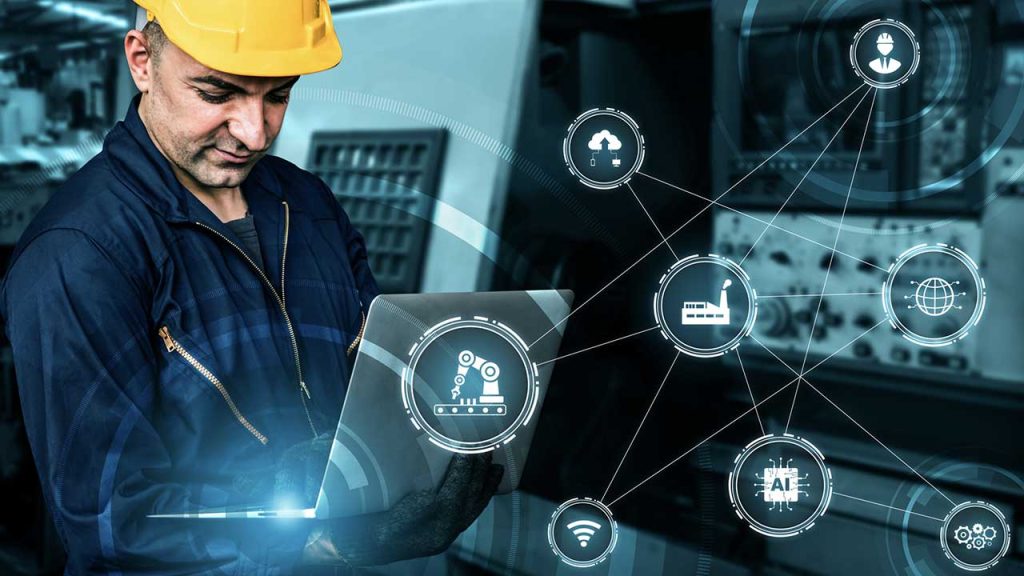Why Every Semiconductor Fab Needs a Digital Twin Strategy — Not Just Digital Tools | SPONSORED
The semiconductor industry is moving faster than its tools can keep up. The pace of change, the explosion of data, and the pressure to build fabs in record time are colliding — and the result is a growing gap between design intent and operational reality.
Digital twins are emerging as the bridge between those two worlds. But they’re not just another piece of software or a line item in a digital roadmap. They represent a shift in how fabs are conceived, built, and managed — from static projects to continuously evolving systems.
What a Digital Twin Really Means
The term digital twin has been used so often that it risks losing meaning. In the semiconductor context, it’s not a marketing slogan. It’s a working model — a virtual replica of a wafer, a process, or an entire factory — used to simulate, test, and optimize performance before and after physical deployment.
Siemens has long used digital twins in the design phase through electronic design automation (EDA) tools. But the real transformation begins when those digital twins extend beyond the design lab — connecting to live fab operations, tool data, and yield results in real time.
When that happens, fabs move from guesswork to precision forecasting. Engineers can test how layout changes might impact yield, how process tweaks affect energy use, or how scheduling variations shift throughput — without stopping production or wasting a single wafer.
From Fragmented Tools to a Connected Vision
Digital twins fail when treated as isolated pilots. Many fabs adopt digital tools piecemeal — one team for predictive maintenance, another for sustainability tracking, another for process modeling. The result is a digital patchwork: overlapping solutions that don’t talk to each other.
The real power of a digital twin lies in integration. Fabs need to define a North Star — a long-term vision for what success looks like in three, five, or even ten years — and then work backward from there.
That vision aligns departments, budgets, and systems around a shared digital foundation. When operations, engineering, and sustainability teams all feed data into a single digital twin ecosystem, every improvement in one area strengthens the others.
Without that alignment, Fabs risk investing in tools that deliver short-term results but don’t scale to future requirements.
Speed, Flexibility, and the New ROI
A full-fab digital twin is not just a planning tool — it’s an accelerator. Simulating factory construction and operations allows companies to test thousands of “what-if” scenarios before breaking ground. They can identify bottlenecks, adjust equipment layouts, or simulate energy loads.
In an industry where time-to-market defines competitiveness, this speed matters. Every month saved in ramp-up can mean millions in additional revenue. Digital twins help fabs start faster, stabilize earlier, and adapt more quickly when product requirements shift.
They also build flexibility into assets designed to last decades. A fab designed today must produce not only current-generation chips but future designs that may have entirely different process requirements. A digital twin lets operators continuously model and reconfigure workflows — keeping the factory relevant and profitable over time.
Connecting the Physical and Digital Worlds
Digital twins transform how information flows through a fab. Instead of scattered databases, each tool, process, and sensor becomes part of a single digital thread — linking design data with manufacturing execution and operational performance.
This thread allows every stakeholder — from a design engineer to a facility manager — to work from the same source of truth. It enables faster decisions, fewer surprises, and a feedback loop that continuously improves both the digital and physical systems.
When applied at scale, digital twins don’t just optimize a fab — they redefine how the semiconductor ecosystem collaborates. Suppliers, partners, and sustainability teams can plug into the same digital framework to analyze performance, trace materials, and benchmark efficiency.
A Foundation for the Future
Digital twins are not the destination; they are the foundation. They connect every layer of semiconductor manufacturing — from chip design to equipment behavior to facility management — into one coherent, evolving model.
Fabs that build this foundation today will gain agility for what’s coming next: sustainability requirements, new process nodes, regional reshoring, and increasingly complex global supply chains.
In a world where fabs can cost tens of billions and take years to build, the most valuable blueprint may not be made of concrete and steel, but of data — a twin that learns, adapts, and guides the real factory toward its future.
Sponsored by Siemens
About the author
 Brian Taylor is a seasoned leader in the semiconductor industry, serving as Head of Semiconductor Sales / Head of Electronics & Semiconductor US at Siemens. With more than 20 years at Siemens, his expertise spans advanced manufacturing, automation architecture, and digitalization—focused on helping customers in the high-cost, high-complexity semiconductor ecosystem accelerate productivity and yield.
Brian Taylor is a seasoned leader in the semiconductor industry, serving as Head of Semiconductor Sales / Head of Electronics & Semiconductor US at Siemens. With more than 20 years at Siemens, his expertise spans advanced manufacturing, automation architecture, and digitalization—focused on helping customers in the high-cost, high-complexity semiconductor ecosystem accelerate productivity and yield.

